Abstract
Each of three pigeons was studied first under a standard fixed-interval schedule. With the fixed interval held constant, the schedule was changed to a second-order schedule in which the response unit was the behavior on a small fixed-ratio schedule (first a fixed-ratio 10 and then a fixed-ratio 20 schedule). That is, every completion of the fixed-ratio schedule produced a 0.7-sec darkening of the key and reset the response count to zero for the next ratio. The first fixed-ratio completed after the fixed-interval schedule elapsed produced the 0.7-sec blackout followed immediately by food. These manipulations were carried out under two different fixed-interval durations for each bird ranging from 3 min to 12 min. The standard fixed-interval schedules produced the typical pause after reinforcement followed by responding at a moderate rate until the next reinforcement. The second-order schedules also engendered a pause after reinforcement, but responding occurred in bursts separated by brief pauses after each blackout. For a particular fixed-interval duration, post-reinforcement pauses increased slightly as the number of pecks in the response unit increased despite large differences in the rate and pattern of key pecking. Post-reinforcement pause increased with the fixed-interval duration under all response units. These data confirm that the allocation of time between pausing and responding is relatively independent of the rate and topography of responding after the pause.
Full text
PDF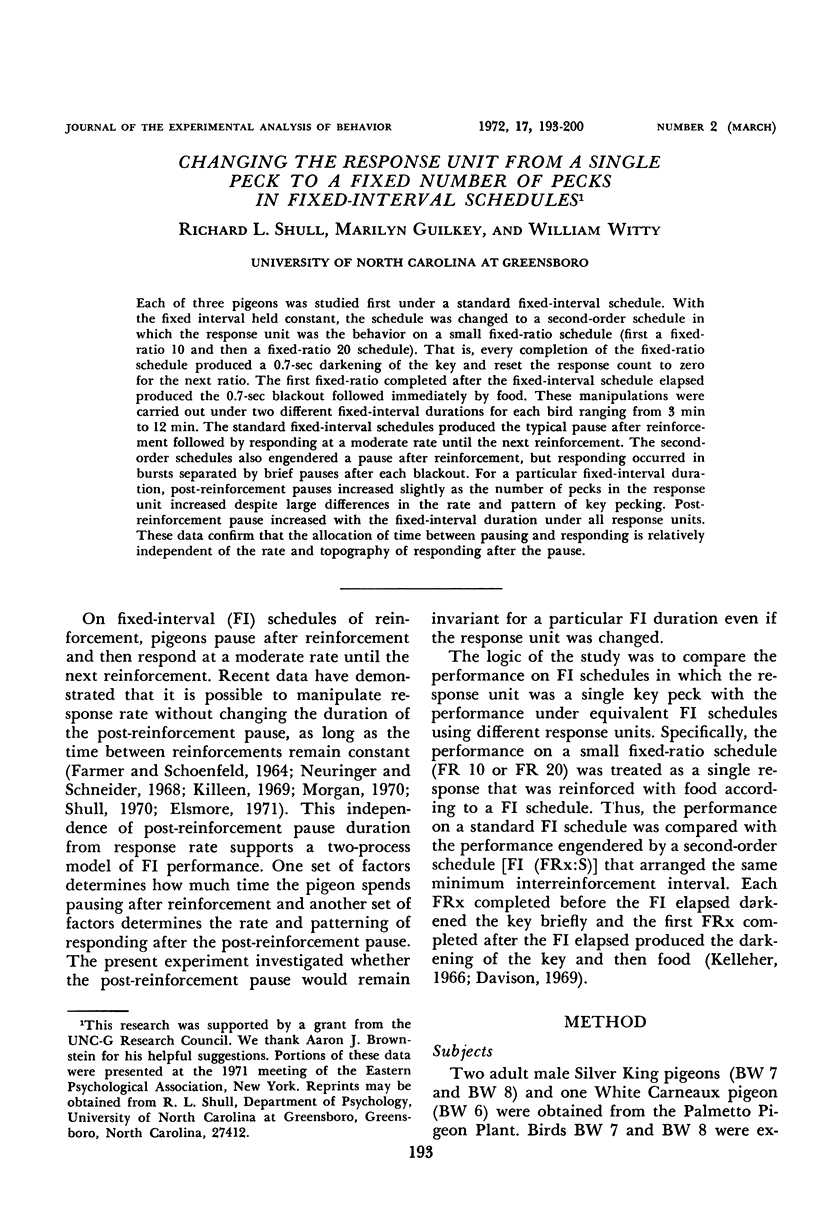
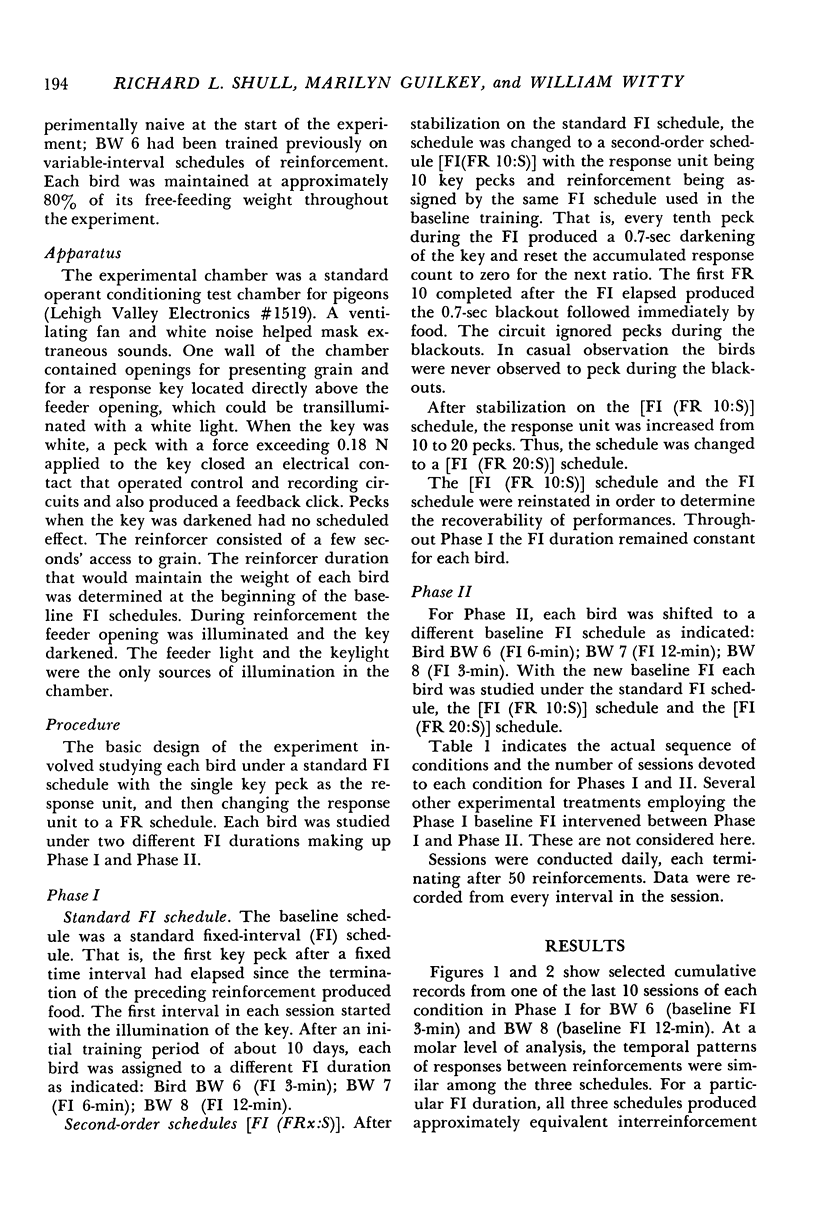
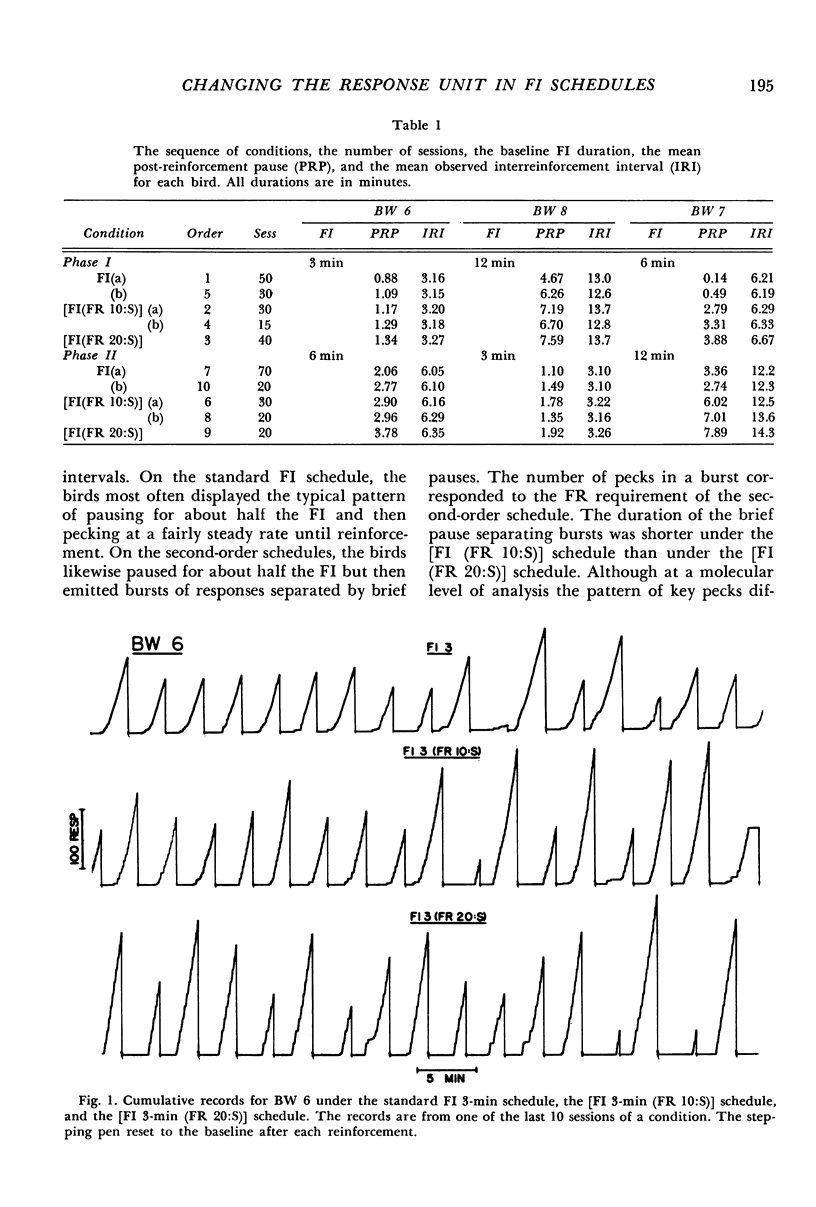

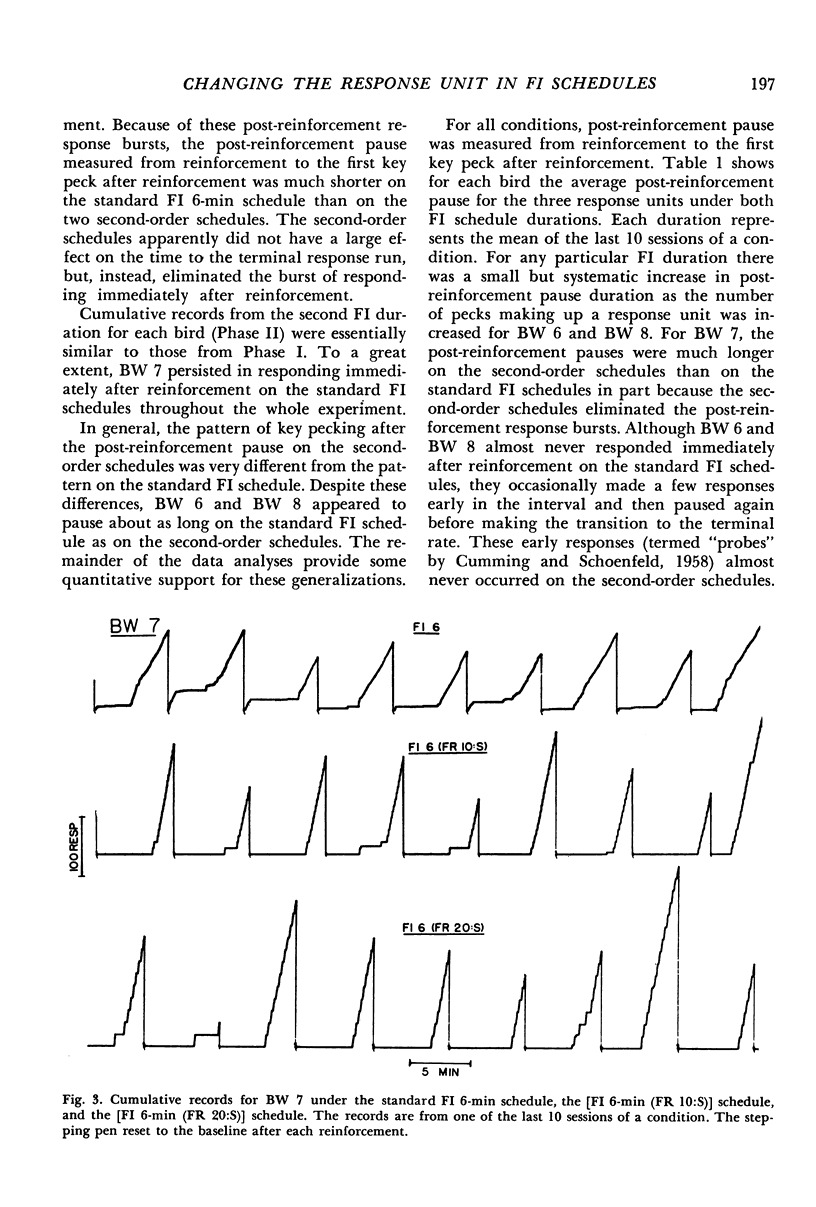
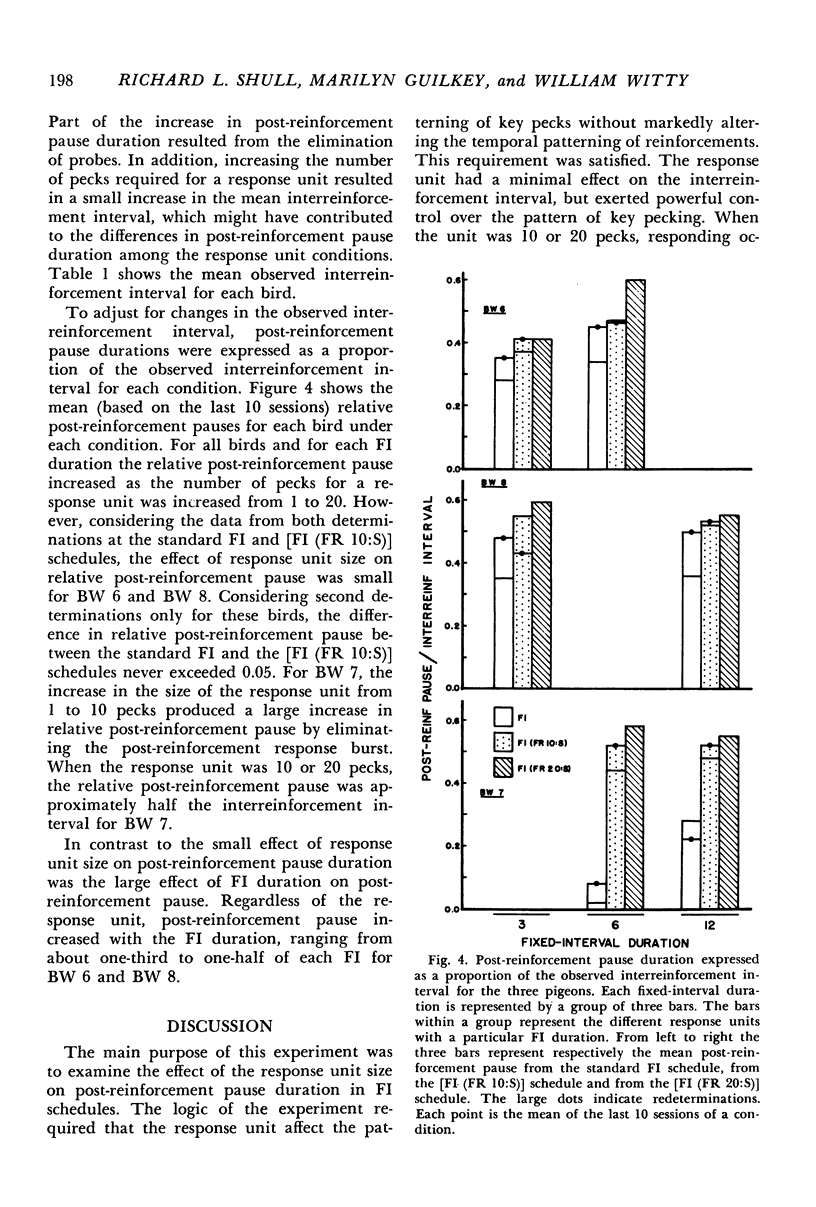
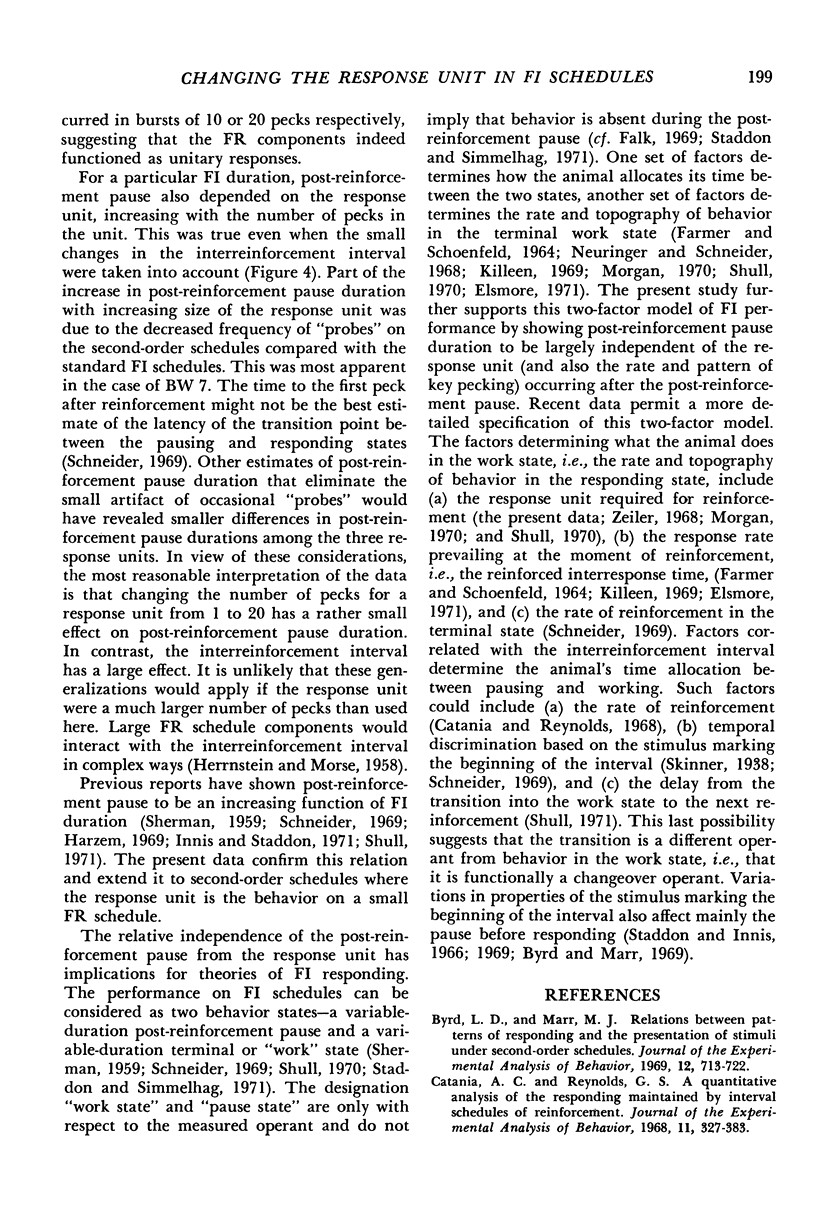
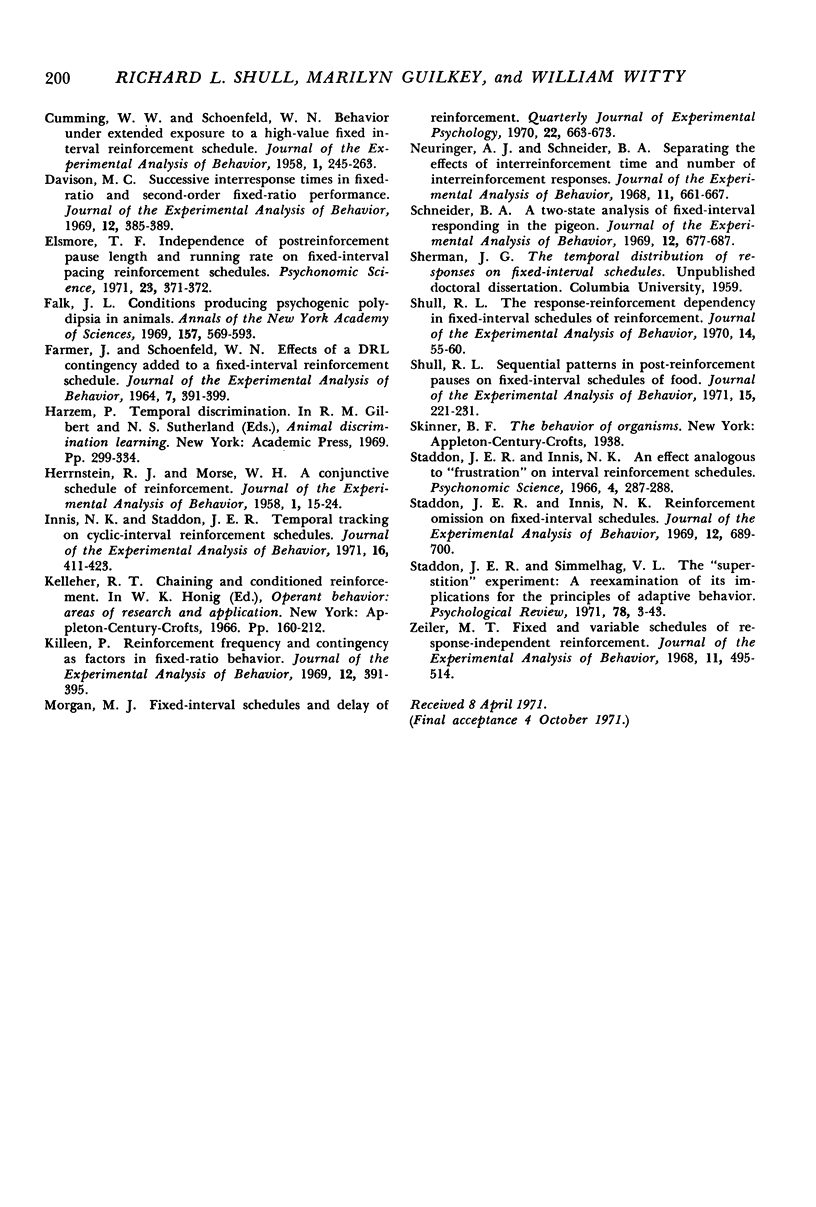
Selected References
These references are in PubMed. This may not be the complete list of references from this article.
- Byrd L. D., Marr M. J. Relations between patterns of responding and the presentation of stimuli under second-order schedules. J Exp Anal Behav. 1969 Sep;12(5):713–722. doi: 10.1901/jeab.1969.12-713. [DOI] [PMC free article] [PubMed] [Google Scholar]
- Catania A. C., Reynolds G. S. A quantitative analysis of the responding maintained by interval schedules of reinforcement. J Exp Anal Behav. 1968 May;11(3 Suppl):327–383. doi: 10.1901/jeab.1968.11-s327. [DOI] [PMC free article] [PubMed] [Google Scholar]
- Cumming W. W., Schoenfeld W. N. Behavior under extended exposure to a high-value fixed interval reinforcement schedule. J Exp Anal Behav. 1958 Aug;1(3):245–263. doi: 10.1901/jeab.1958.1-245. [DOI] [PMC free article] [PubMed] [Google Scholar]
- Davison M. C. Successive interresponse times in fixed-ratio and second-order fixed-ratio performance. J Exp Anal Behav. 1969 May;12(3):385–389. doi: 10.1901/jeab.1969.12-385. [DOI] [PMC free article] [PubMed] [Google Scholar]
- FARMER J., SCHOENFELD W. N. EFFECTS OF A DRL CONTINGENCY ADDED TO A FIXED-INTERVAL REINFORCEMENT SCHEDULE. J Exp Anal Behav. 1964 Nov;7:391–399. doi: 10.1901/jeab.1964.7-391. [DOI] [PMC free article] [PubMed] [Google Scholar]
- Falk J. L. Conditions producing psychogenic polydipsia in animals. Ann N Y Acad Sci. 1969 May 15;157(2):569–593. doi: 10.1111/j.1749-6632.1969.tb12908.x. [DOI] [PubMed] [Google Scholar]
- HERRNSTEIN R. J., MORSE W. H. A conjunctive schedule of reinforcement. J Exp Anal Behav. 1958 Jan;1:15–24. doi: 10.1901/jeab.1958.1-15. [DOI] [PMC free article] [PubMed] [Google Scholar]
- Innis N. K., Staddon J. E. Temporal tracking on cyclic-interval reinforcement schedules. J Exp Anal Behav. 1971 Nov;16(3):411–423. doi: 10.1901/jeab.1971.16-411. [DOI] [PMC free article] [PubMed] [Google Scholar]
- Killeen P. Reinforcement frequency and contingency as factors in fixed-ratio behavior. J Exp Anal Behav. 1969 May;12(3):391–395. doi: 10.1901/jeab.1969.12-391. [DOI] [PMC free article] [PubMed] [Google Scholar]
- Neuringer A. J., Schneider B. A. Separating the effects of interreinforcement time and number of interreinforcement responses. J Exp Anal Behav. 1968 Nov;11(6):661–667. doi: 10.1901/jeab.1968.11-661. [DOI] [PMC free article] [PubMed] [Google Scholar]
- Schneider B. A. A two-state analysis of fixed-interval responding in the pigeon. J Exp Anal Behav. 1969 Sep;12(5):677–687. doi: 10.1901/jeab.1969.12-677. [DOI] [PMC free article] [PubMed] [Google Scholar]
- Shull R. L. Sequential patterns in post-reinforcement pauses on fixed-interval schedules of food. J Exp Anal Behav. 1971 Mar;15(2):221–231. doi: 10.1901/jeab.1971.15-221. [DOI] [PMC free article] [PubMed] [Google Scholar]
- Shull R. L. The response-reinforcement dependency in fixed-interval schedules of reinforcement. J Exp Anal Behav. 1970 Jul;14(1):55–60. doi: 10.1901/jeab.1970.14-55. [DOI] [PMC free article] [PubMed] [Google Scholar]
- Staddon J. E., Innis N. K. Reinforcement omission on fixed-interval schedules. J Exp Anal Behav. 1969 Sep;12(5):689–700. doi: 10.1901/jeab.1969.12-689. [DOI] [PMC free article] [PubMed] [Google Scholar]


